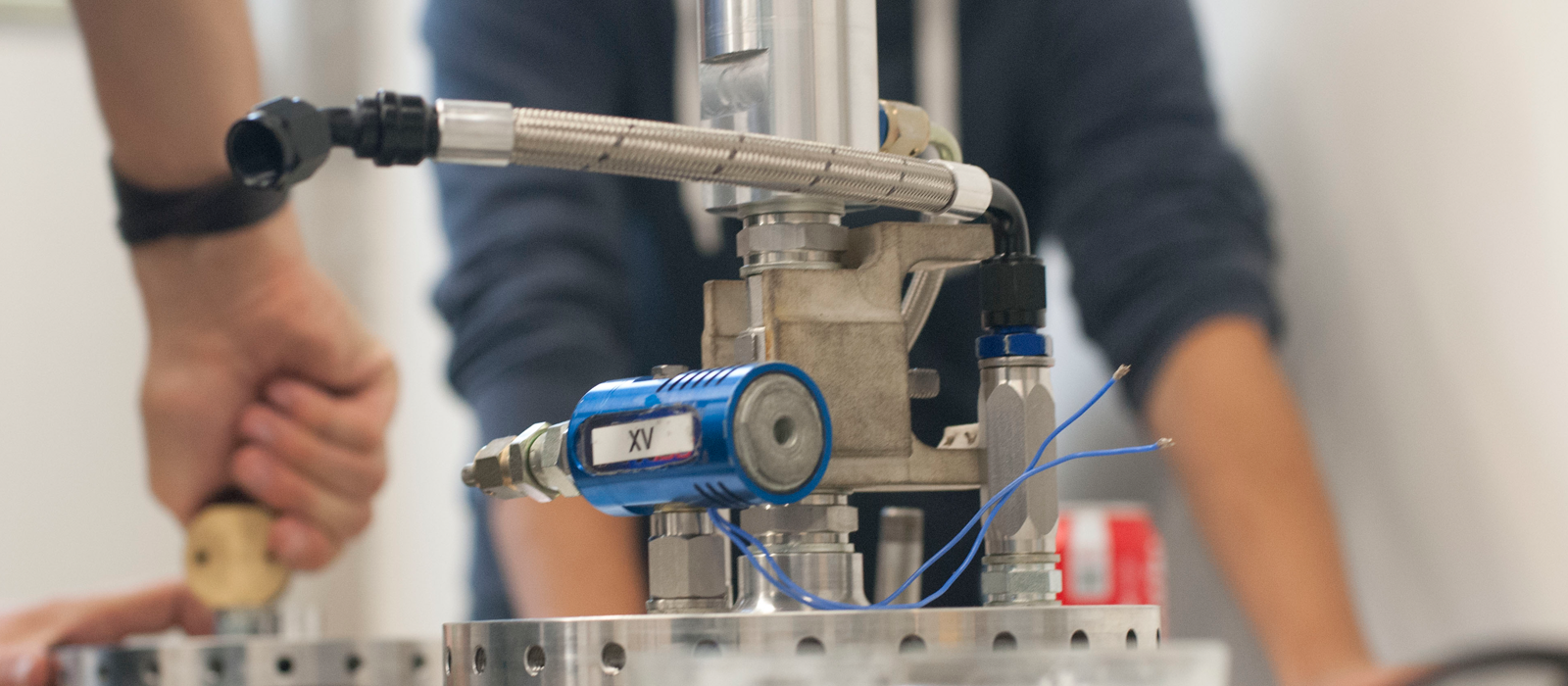
A rocket, more so than other vehicles, is part of elaborate safety requirements and procedures. In part one of this blogpost we will discuss how safety considerations determine the lay-out of the Stratos II rocket and ground equipment.
Pre-launch phases
Since Stratos II is a hybrid rocket that will only be loaded with oxidizer when it is sitting on the pad and the grounds are evacuated (https://dare.tudelft.nl/2014/08/trauen-test-campain/), we defined several phases during the pre-launch procedures that need specific attention:
- The basic precautions that you need to take when handling heavy objects. Stratos II may have an empty tank, but it is still a 110 kg launch vehicle that has to be transported and hoisted into a nine meter launch tower. This mainly involves hard hats, work shoes and some coordinated labor.
- The handling of pyrotechnic materials. For Stratos II this only includes the igniter: a small pyrotechnic device, the size of a firecracker. This in comparison to some of the solid engines that were used on other DARE rockets.
- The procedures around filling the nitrous oxide, which is the oxidizer for the hybrid rocket motor.
- The launch which ends in a successful burn or a launch abort.
The Countdown starts
T-2 hrs Saying good bye
The whole team is on the pad to transport their project to the launch tower. They lift the rocket up and take team pictures, it may be the last moment the team can touch their project. All cables, running from the launch boxes to the Launch Command Post (LCP), and the filling lines and umbilicals are assembled on the pad.
T-1:30 Connecting the Igniter
The launch pad is evacuated, with the exception of the safety crew. This involves an INTA safety officer, INTA technician, DARE technician, DARE electrical engineer and DARE Safety Officer. They perform two safety critical tasks: connecting filling lines to the tanks (they remain closed) and connecting the igniter to the launch box (which is in safe mode). The last step they take is opening the N2O tanks; the rocket is ready to be filled.

Gabriel and Lucifer: Gabriel and Lucifer are the two launch boxes that are used in DARE to assure a controlled situation at all times. Gabriel is the box placed at the Launch control, Lucifer is the box placed at the tower. They involve two launch keys that are assigned to the person at LCP and to the PYRO at all times. It is their job to know where their key is at all times. These keys physically disconnect the firing lines. On Lucifer the key from the PYRO can disconnect the firing lines from the rest of the system and ground them. At the LCP both keys are required to arm the system. This makes sure at no point the igniter can accidentally go of.
T-1:00 Point of no return
With the safety crew away from the pad and out of direct-line of sight of the rocket outside the 150 meter safety perimeter, the filling command is given. The idea here is to remotely fill the tank without manually operating the valves or manually cutting the umbilical.

Filling the tank: Filling the tank requires opening two valves which opens a line to the bottom of the tank. With the N2O tanks mounted upside down this means that mostly liquid N2O is transported to the rocket. At the same time a small bleed valve at the top of the tank ensures that air and some gaseous nitrous oxide can leave the tanks. This small bleed valve is normally open and makes sure that even if all connections to the rocket is lost the safety personnel can just cut the power to this valve and let the rocket vent the tank until it is completely empty. (A feature that was also used in early days of Redstone mercury.
T-0:00 Launch
The rocket is loaded. Both the safety officer and DARE technician insert their keys into the launch box, waiting for the final countdown. Mission Control, situated approximately 1200 meters from the launch pad at one of the INTA buildings, confirms with their radars and with the boats that the range is safe and sky is clear. They count down for launch.
“Launch command post, you are go for launch in ten, nine, eight…”

